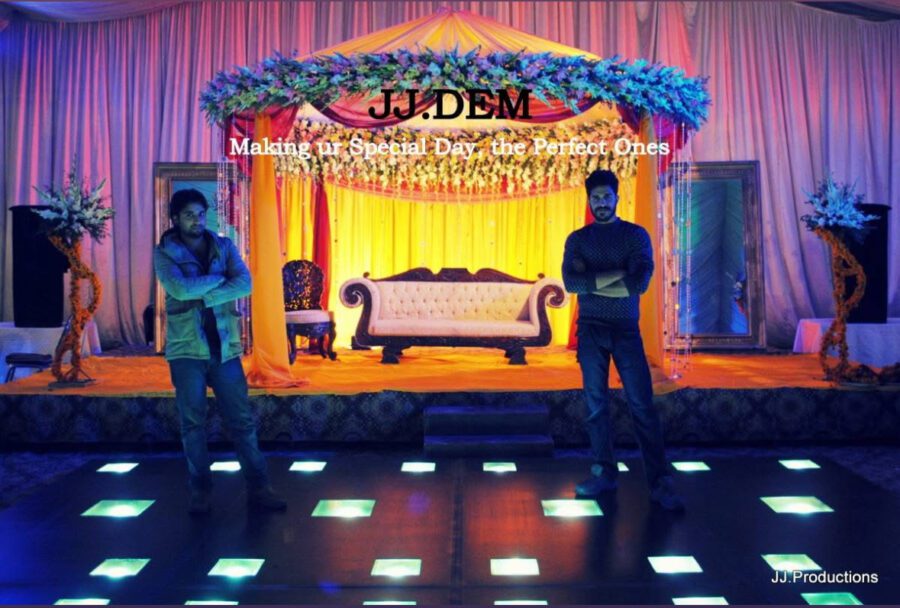On an early February afternoon, Kirk Duclaux sat down with us for an interview about the humble beginnings of the University of Oklahoma in Arezzo study abroad program. Mr. Duclaux serves as director of the OU in Arezzo program, and is what we would consider to be the original OUA innovator. Today, OUA is an established program for students at OU to experience international learning, but in the beginning, there was no blueprint, no dedicated campus, and no guarantee of success. What started as a small, makeshift program evolved into a full study abroad experience, all thanks to Duclaux’s unconventional problem-solving and willingness to innovate.
Ramey Brinkman opened the interview, asking Duclaux to “walk me through the process on how you started talking to OU and how this program started.”
Duclaux: “I guess in general, people have the tendency to think that it just kind of like happened overnight. One day you’re walking down the street, next day you’re like director of all this nonsense. It’s really a bit more kind of tangential.”
He tells us that through his small business in Florence–luxury art history tours for wealthy tourists–he caught the attention of OU’s former president David L. Boren.
Duclaux: “And so I took him around and met him, and he said, ‘oh you should come to Oklahoma and talk about Michelangelo.’ Well, I did, but ultimately he was interested in ramping up study abroad.”
Duclaux explains that the former president Boren was a major figure in making education abroad at OU a thing. Boren wanted as many of his students as possible studying abroad, and he knew Italy was a hub for these experiences. Boren enlisted Duclaux to come to Oklahoma and teach a couple lectures to pique the interest of students.
Duclaux: “They were like, is this guy legit? What’s the story here? And so throughout this whole process, I kind of made my way meeting these people, just being myself, just trying to be passionate about what I believe in, which is really teaching art history.”
And so it started with a three week summer program with 16 students. President Boren was a part of the group, following the guinea pig students along this new uncharted path that Kirk Duclaux was enlisted to forge.
Duclaux: “There was no way to disappoint anybody because I didn’t know any better. It was perfect. All I knew was like this person was trusting me. And so I tried to build on that and kept doing the best I could.”
Today, this summer program has around 400 students, and from that foundation a semester study abroad program was developed. The next step?
Duclaux: “He [Boren] said, go find a city. What city works? So we chose Arezzo. And then from Arezzo, go find a place. We had this place. And so over the course of almost 20 years, it developed from something happening, kind of, out of, almost ad hoc, into something that became a dedicated program in the way that you see it.”
Before finding the San Francesco Classroom Annex, Duclaux did anything to make the program work. His hands-on approach set OUA apart from other programs. “I’ll pick up a broom if I have to. I don’t care,” he told us. That flexibility was crucial in the early days, as he had to make classrooms out of whatever space was available, whether out of his own basement or finding an office space.
“That ability to pivot and move around and do different things when it’s required…it’s the nature of the beast.”
Duclaux: “And so that’s kind of how it rolled out from very simple, kind of go-build-a-little-rinky-dink-program into, okay, here’s the big time.”
In regard to the location choice of Arezzo, which is different from the normal study abroad destination of Florence, Ashtynn Caldwell asked if there was “…kind of a motive behind choosing a smaller city such as Arezzo?”
Duclaux: “Absolutely.”
Duclaux explains that Boren understood that letting him take the reins on this project would mean that there would be a historical consciousness to how these programs have been built previously. Duclaux did not want to replicate a program that already existed, he wanted to make a program that used the industry standards already in place and expanded upon the shortcomings.
Duclaux: “When I’m building programs with OU, I find holes. I think holes are more easily filled than similarities. At the end of the day, finding these niches, where people need stuff, is where you can really get things to grow.”
Creating a program based in Arezzo, a charming town full of rich history, allows students coming from the University of Oklahoma to gain a unique study abroad experience, different from the fast-paced environment of a major city like Florence. The small community of Arezzo allows students to really engage in the culture around them, rather than experiencing a tourist destination. It allows students to learn cultural empathy and connect with the locals in a more authentic way.
“That cultural empathy, I think, is part of the personal impact that you will take with you wherever you go, any point in your life. If you don’t, shame on you.”
The physical location is not the only thing that drives innovation. When asked what accomplishment he was most proud of, Duclaux had a two-word answer: “My team.” When asked what he looked for when building this team, he had a longer response.
Duclaux: “Somebody who was creative, somebody who didn’t necessarily worry about what they were supposed to be doing. A lot of it had to do with how willing a person is to think outside the box.”
Sterling Foster then asks, “What do you think creativity’s role is in your job?”
Duclaux: “Oh, my. As an art historian, it’s everything.”
“I really, really believe you cannot be anything unless you’re creative.”
Duclaux then describes to us how creativity is everywhere and is in everything. Creativity, he explains, is what sets people apart from the rest. And what is innovation if not being creative? We challenge him to dive deeper, asking, “Do you have an example of your own creativity driving innovation?”
Duclaux: “Wow. I go immediately to art history for that. I don’t think of myself as an administrator. When I think of creativity and I think about this place and the bricks and mortar, I think story. I think narrative. My ability to talk about art and tell a story about art, I think is a creative gesture that applies to this place and how I would like people to perceive this place. I want them to see this as a part of a thousand years of creative energy.”
He dives into how his creative storytelling is how he talks to students on campus and it’s also how he gains support and funding. He uses this creative side of himself to be an advocate for this program.
Duclaux: “At the end of the day, you gotta convince them. And I do that by telling a story. In the same way I would convince you that Michelangelo is important. By telling you a story.”
At this, we all nod our heads and murmur in agreement. Aidan Jordan asks, “Speaking of the importance of creating a safe space to be creative, how did that go from your basement to what it is now?”
Duclaux: “Well, to me it was obvious. Taking it from something small to something big, or something that’s ad hoc into something more formalized, requires this, in my particular situation, this unwillingness to bow down to mediocrity. I don’t want to be a mediocre program. I can see where we can improve. And that takes pushiness, that takes advocacy, that takes not settling for somebody who may be above you who just wants the status quo.”
Ashtynn doesn’t miss a beat to ask him, “Where do you see this going for the future of OUA? How would you kind of maintain this idea of growth while keeping such an intimate experience with the students here?”
Duclaux: “I think part of the easy way out would be to say that numbers aren’t everything. I think quality is always better. Growth isn’t always great.”
He then delves into his desire for a graduate program, with them staying in apartments around the city. He wants more freshmen to study abroad. He also would like to see more people get financial aid to help cover the cost of studying abroad.
Duclaux: “Those are the types of students I think we need to think about when we think about numbers. We need to think about how to accommodate all types of students.”
Sterling then asks if he thinks another university would be a good challenge for OUA, and “Would it drive innovation for us here?”
Duclaux: “Yeah, it would. I think we would learn a lot more if we had more interaction with our peers. There’s 140 programs in Italy, so there’s a lot of innovative thinking already, but [in Arezzo] we chose well. We picked well and it’s worked out for us.”
When asked what would he say to a student that is thinking of studying here, but doesn’t necessarily see their major coursework reflected in the courses offered, the innovator in Duclaux gave an immediate response.
Duclaux: “My ego says, call me and we’ll figure it out. I think ultimately it’s like, where do you want to go? How far do you want to get outside your comfort zone?”
To wrap things up, Aidan asked one last question, “If present day Kirk could go back in time and tell yourself a piece of advice, when you first started this program, what would it be?”
Duclaux: “Get on the dance floor. I would say, put your ambitions aside and go dance. Don’t be a wallflower. Is that the advice you were thinking?”
We all laughed, because no, we were not thinking that. Ashtynn adds, “I wasn’t expecting that but I think I like it.”
But Duclaux’s metaphor is fitting. Innovation, like dancing, requires stepping outside your comfort zone. No one cares how you dance—they care that you showed up. People care that you made an impact. And in the heart of Arezzo, thanks to Duclaux’s vision, OUA is more than just a program. OUA is a testament to creative thinking, adaptability, and ultimately, Kirk Duclaux’s superpower of storytelling.
“But the point is, you go beyond what you’re comfortable doing, and nobody really cares how you dance. They just say, ‘Wow, we had a good time.’”
Thank you to Kirk Duclaux for sitting down with us for our very first interview.





